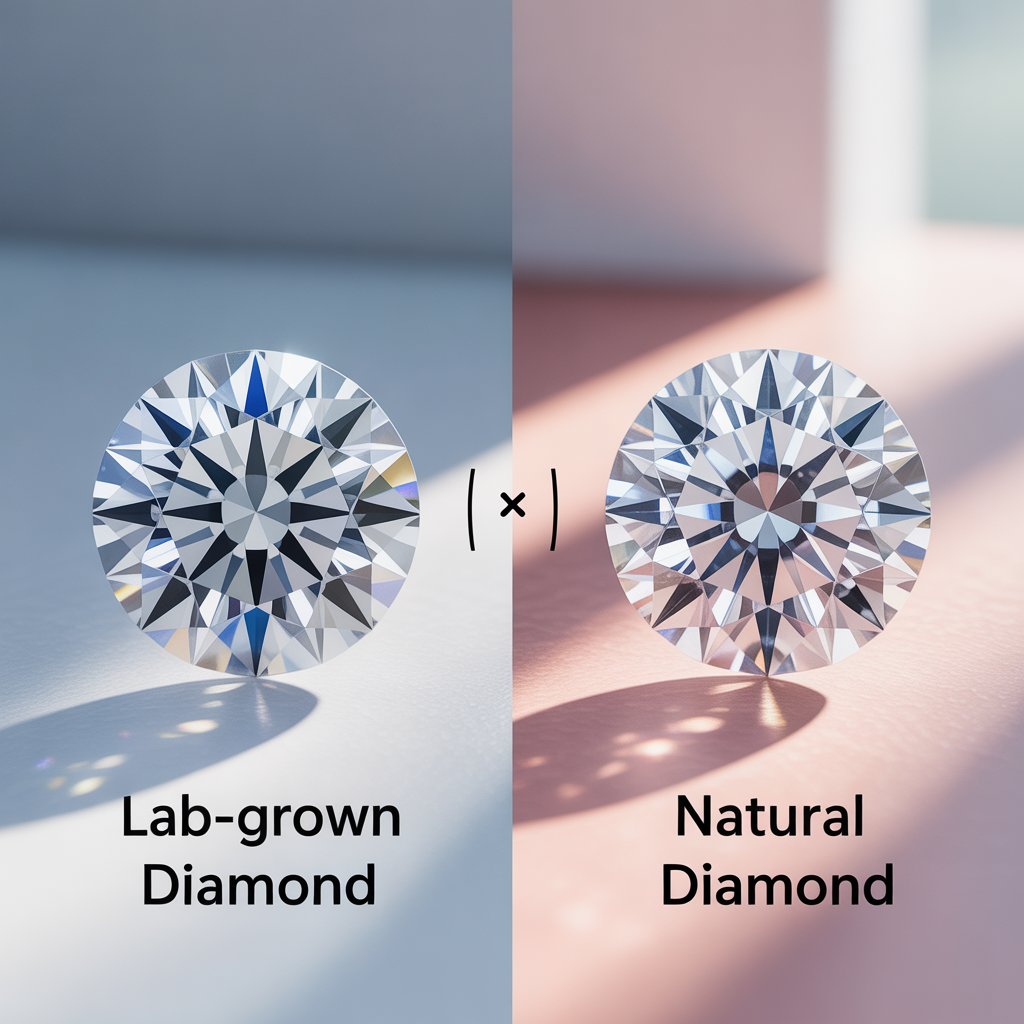What’s the Difference Between Lab-Grown and Natural Diamonds
Introduction
Definitions
Lab-grown diamonds, also known as synthetic or cultured diamonds, are created in controlled environments using advanced technological processes that replicate the natural conditions under which diamonds form. In contrast, natural diamonds are formed over millions of years in the Earth’s mantle through high pressure and temperature.
The primary distinction lies in their origin; lab-grown diamonds are manufactured, while natural diamonds are mined. Both types possess identical physical, chemical, and optical properties, often making them indistinguishable to the naked eye.
Key Concepts
Understanding the key concepts surrounding lab-grown and natural diamonds is crucial for making informed decisions. One major concept is the diamond grading system, which assesses diamonds based on the Four Cs: Carat, Cut, Clarity, and Color. Both lab-grown and natural diamonds are graded using the same criteria.
Another concept is the impact on the environment. Lab-grown diamonds are considered more sustainable as their production does not involve extensive mining, which can lead to environmental degradation. Additionally, the ethical implications of diamond sourcing are significant, with lab-grown diamonds often marketed as conflict-free.
Examples
Several brands offer lab-grown diamonds, such as Brilliant Earth and Clean Origin, emphasizing their eco-friendly production processes. On the other hand, iconic natural diamond brands like De Beers focus on the heritage and rarity of their stones.
For instance, a 1-carat lab-grown diamond can cost significantly less than its natural counterpart, which can influence consumer choices. This price difference often makes lab-grown diamonds appealing to budget-conscious buyers.
Pros and Cons
Lab-grown diamonds come with numerous advantages, including lower prices, ethical sourcing, and a reduced environmental footprint. They can be customized in terms of size and quality, catering to individual preferences.
However, some argue that lab-grown diamonds lack the rarity and historical significance of natural diamonds. Natural diamonds can also appreciate over time, while lab-grown diamonds may not hold the same resale value.
On the flip side, natural diamonds face scrutiny for their environmental impact and potential links to conflict zones, raising ethical concerns among consumers.
Case Study
Consider the case of a couple choosing between a lab-grown and a natural diamond for an engagement ring. They weigh the emotional significance of a natural diamond against the sustainability and cost-effectiveness of a lab-grown option.
Ultimately, they choose a lab-grown diamond due to its affordability and eco-friendly attributes, reflecting a growing trend among younger consumers who prioritize sustainability over tradition.
Future Trends
The diamond industry is witnessing a shift, with lab-grown diamonds gaining popularity. As technology advances, the quality and availability of lab-grown diamonds are expected to improve further. This trend may lead to increased acceptance of lab-grown diamonds in mainstream markets.
Conclusion
In conclusion, the differences between lab-grown and natural diamonds are significant in terms of origin, pricing, and ethical considerations. As consumer preferences continue to evolve, both types of diamonds will likely coexist in the market, catering to diverse values and preferences.







